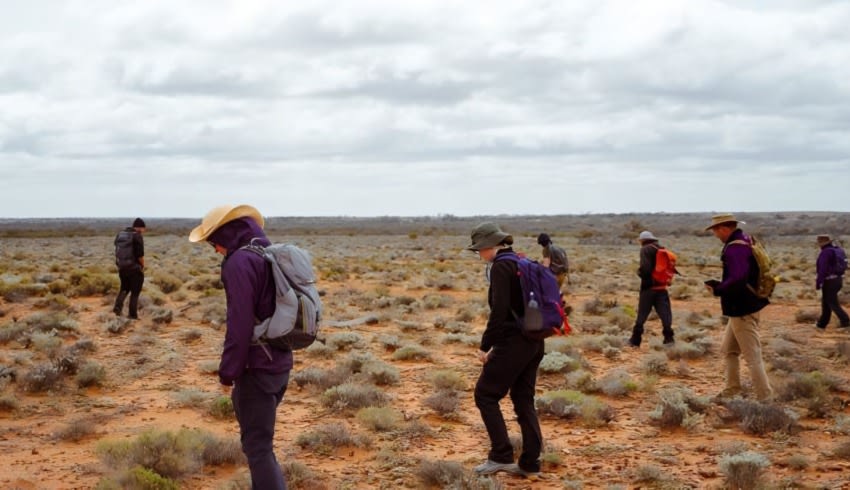Curtin and Monash researchers have used drones to help locate pieces of a six-tonne asteroid that crashed in the South Australian outback in 2013.
The team also used data from weather radars and satellites to narrow the search down to a six-kilometre “likely fall zone” north of Port Augusta.
Professor Andy Tomkins from Monash University led the field search, recovering 44 samples weighing just over 4kg.
“These samples are all from a six-tonne asteroid that would have broken up high in our atmosphere, and this event is exciting as it is the first strewn field discovered since the famous Murchison meteorite fall in 1969,” Professor Tomkins said.
“Samples were carefully collected to avoid any contamination by microbes from outside the natural environment, following the directive of Monash University microbiologist Dr Rachael Lappan.
“Dr Lappan and her team will now undertake the first study of how microbes interact with a newly fallen meteorite.
“This is an opportunity to test the theory that as microbes first move into a new environment, they initially survive by consuming minerals and even gases from the atmosphere.”
Dr Hadrien Devillepoix from Curtin University’s Space Science and Technology Centre (SSTC) said the discovery was the first time meteorites have been found using non-US radar data, made possible by the Bureau of Meteorology recently making its own weather radar data available for research.
“Access to the weather radar data gives us the ability to track meteorites as they fall through the lower atmosphere, similar to rain,” Dr Devillepoix said.
“We found meteorite signatures for the 2013 event, allowing us to map the 6km fall zone just north of Port Augusta. Guided by a new technique developed by SSTC’s Seamus Anderson, meteorites were automatically identified in drone survey images of the fall zone.
“Using artificial intelligence and machine learning to map a meteorite-strewn field is a world first, and searching such a large area on foot would have taken weeks rather than days.”
The Bureau of Meteorology’s Dr Joshua Soderholm said using radar data to help locate the meteorite remnants was an exciting new application for the tech.
“The Bureau’s weather radars are used primarily for monitoring precipitation but are also able to detect anything present in the sky, including birds, bats and insects, however using them to hunt for meteorites was unprecedented,” Dr Soderholm said.
The samples will be displayed at the South Australian Museum from 26 November 2022 – 5 February 2023 as part of the Six Extinctions exhibition.
















